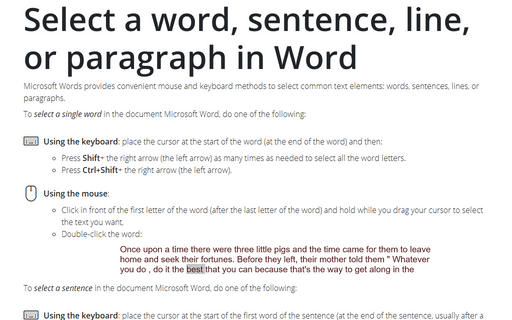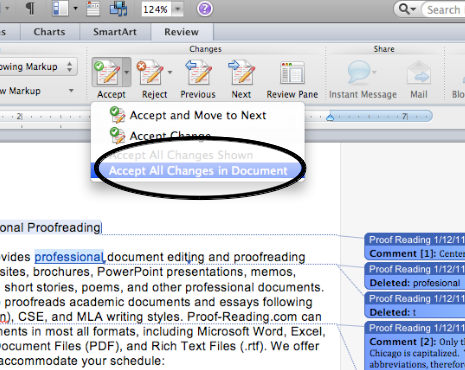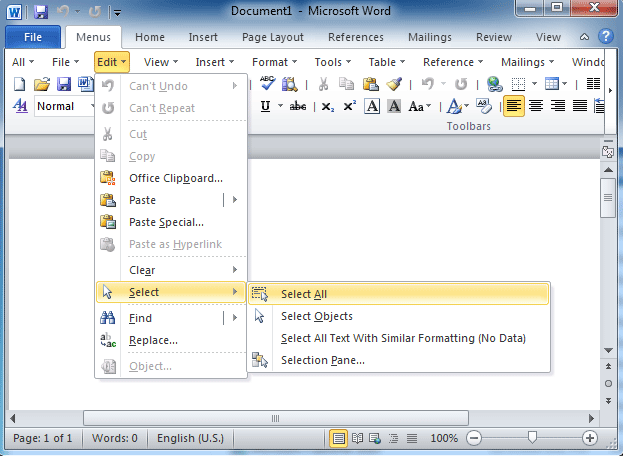

- Word for mac select all images and elements for move pro#
- Word for mac select all images and elements for move free#
Manually place topics anywhere you like, in positions that you feel visualizes best the relations with other topics.
Word for mac select all images and elements for move free#
The free form layout allows you to organize your ideas exactly how you want it.
Word for mac select all images and elements for move pro#
SimpleMind Pro supports a free-form-layout and 6 auto-layout schemes. See the main differences between Free and Pro on this page. Note! Not all features are available in the free edition of SimpleMind. Sibling tool: This adds a sibling topic, a topic with the same parent as the selected topic.This toolbar has the command you use most often, for example adding images, copy or paste. It visualizes the hierarchical relation between the two topics.Ī line that can connect any two topics that are not hierarchically connected.Ĭlick to show the topic toolbar. This creates a hierarchy of topics, with the central theme as the ultimate parent.Ī relation is the line that connects the parent topic to the child topic. Starting from the central theme, add topics. It's the title, the subject, a problem or just a thought. When you intersect two objects, you get the area covered by both objects.To get started, let's explain some of the terms we are using in SimpleMind. This leaves a blank space that the subtracted objects occupied. When you subtract objects, the objects at the front are subtracted from the object behind. The area fill of the merged object is determined by the area fill of the object that is at the rear of all the other objects.

When you merge objects, a new object is created with a shape that follows the shape of the merged objects.
Right-click on the selected objects and select Shapes from the context menu or objects, go to Modify > Shapes on the main menu bar. Shapes take on the properties of the lowermost object in the stacking order. Merge, subtract and intersectĪfter you have selected more than one object, the Merge, Subtract, and Intersect functions become available, allowing you to create a new object with a new shape. 
 Right-click on the selection and select Combine from the context menu.Īt first glance, the results can seem rather surprising, but once you understand the rules governing combination in Draw, combining objects will become clearer. Select the objects you want to combine. When you combine objects, the drawing elements are replaced by Bézier curves and holes appear where the objects overlap. You can split apart combined objects, but the original object properties are lost. Unlike grouping, a combined object takes on the properties of the lowermost object in the stacking order. The Combine function, combines two or more selected objects into a single shape. Right-click and select the Ungroup command from the context menu. Place the mouse cursor anywhere on the group area. To exit the group right click and select Exit group from the context menu. Now the group is temporarily disabled and you can start editing objects inside the group. To Enter a Group simply double click on any object within the group or use the corresponding context menu item. In this mode, the grouping is temporarily disabled so that we can edit group objects separately. However, in order to edit individual objects belonging to a group, it is necessary to first to Enter the group. The objects within group retain their properties while at the same time can be edited independently. If you click on one object in the group, the whole group is selected. When objects are grouped, any editing operations carried out on that group are applied to all objects within the group. Right-click on the group and select Group from the context menu. Select the objects by clicking on each object in turn while holding down the Shift key, or use the Select icon on the Drawing toolbar and draw a selection rectangle around the objects using the cursor. To cancel a temporary grouping of objects, simply click outside of the selection handles displayed around the objects. For example, you can rotate a temporary group of objects in its entirety. Any changes to object parameters that you carry out are applied to all of the objects within the temporary group. Temporary groupingĪ temporary grouping is when several objects are selected. A group can always be undone and the objects that make up the group can always be manipulated separately. You can move the objects as a group and apply global changes to the objects within the group. Grouping of objects is similar to putting objects into a container.
Right-click on the selection and select Combine from the context menu.Īt first glance, the results can seem rather surprising, but once you understand the rules governing combination in Draw, combining objects will become clearer. Select the objects you want to combine. When you combine objects, the drawing elements are replaced by Bézier curves and holes appear where the objects overlap. You can split apart combined objects, but the original object properties are lost. Unlike grouping, a combined object takes on the properties of the lowermost object in the stacking order. The Combine function, combines two or more selected objects into a single shape. Right-click and select the Ungroup command from the context menu. Place the mouse cursor anywhere on the group area. To exit the group right click and select Exit group from the context menu. Now the group is temporarily disabled and you can start editing objects inside the group. To Enter a Group simply double click on any object within the group or use the corresponding context menu item. In this mode, the grouping is temporarily disabled so that we can edit group objects separately. However, in order to edit individual objects belonging to a group, it is necessary to first to Enter the group. The objects within group retain their properties while at the same time can be edited independently. If you click on one object in the group, the whole group is selected. When objects are grouped, any editing operations carried out on that group are applied to all objects within the group. Right-click on the group and select Group from the context menu. Select the objects by clicking on each object in turn while holding down the Shift key, or use the Select icon on the Drawing toolbar and draw a selection rectangle around the objects using the cursor. To cancel a temporary grouping of objects, simply click outside of the selection handles displayed around the objects. For example, you can rotate a temporary group of objects in its entirety. Any changes to object parameters that you carry out are applied to all of the objects within the temporary group. Temporary groupingĪ temporary grouping is when several objects are selected. A group can always be undone and the objects that make up the group can always be manipulated separately. You can move the objects as a group and apply global changes to the objects within the group. Grouping of objects is similar to putting objects into a container.








 0 kommentar(er)
0 kommentar(er)
